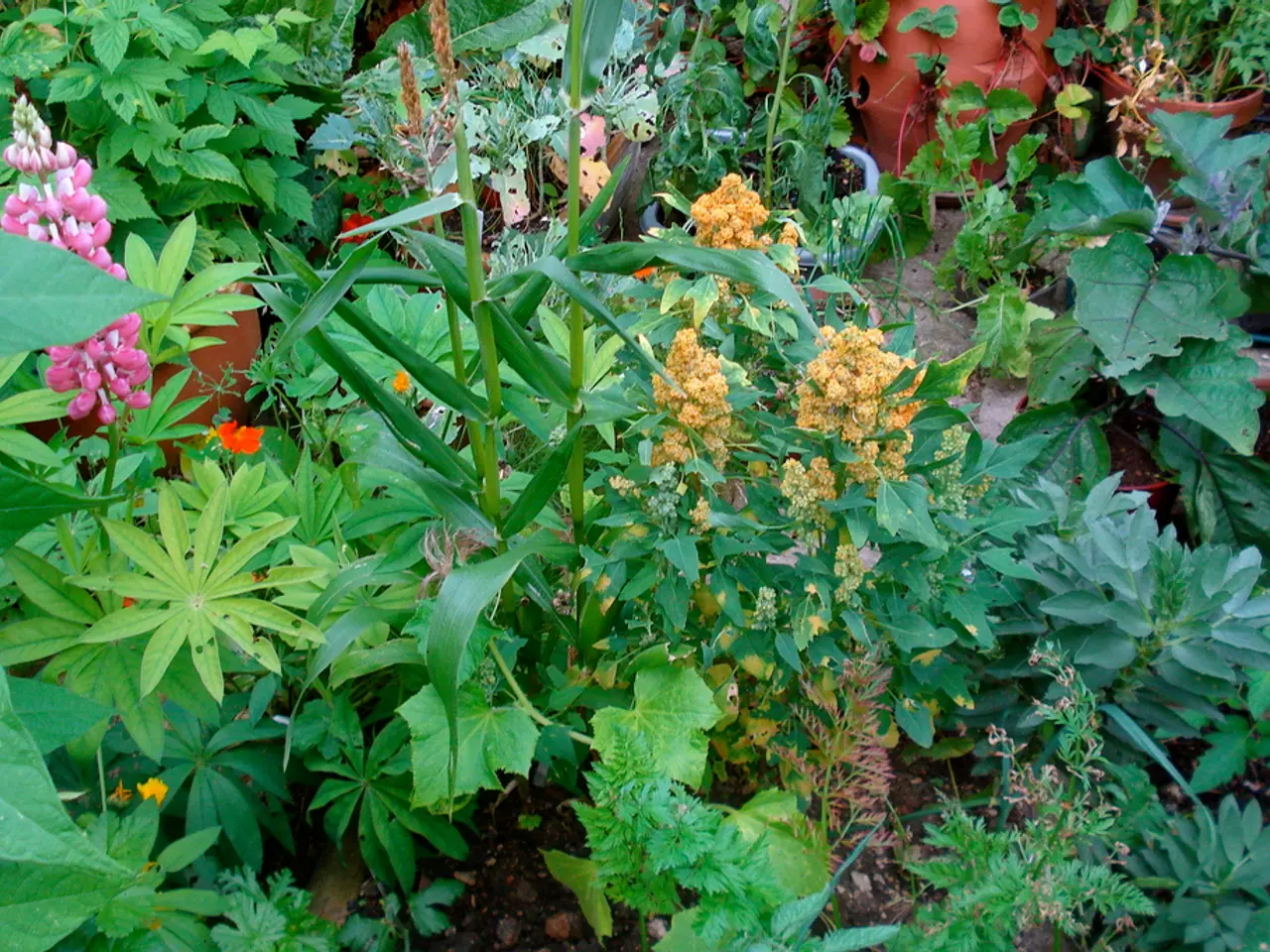Innovative Techniques for Growing Plants in Vertical Arrangements
Transforming Urban Spaces: The Rise of Vertical Gardening
In the heart of the city, a green revolution is underway. Vertical gardening, the practice of growing plants on walls, fences, or special planters, is gaining popularity as an innovative solution for urban dwellers seeking to create a lush retreat amidst concrete jungles.
One enthusiastic advocate of this eco-friendly approach is the author, who has successfully transformed their small balcony into a verdant oasis. By employing creative planting techniques for vertical garden spaces, they have managed to save space, grow fresh produce, and enhance the aesthetic appeal of their living area.
Maximising Vertical Height
The key to a successful vertical garden lies in utilising every inch of available space. Stackable pots, wall-mounted pockets, or tiered planters can create multi-level garden spaces that maximise vertical height on balconies, patios, or indoor walls.
Another effective method is the use of trellises, arbors, wire mesh, or bamboo/wood frames to support climbing and vining plants such as tomatoes, cucumbers, pole beans, jasmine, and clematis. Training plants early on these structures encourages upward growth and increases yield while saving ground space.
Living Walls and Hanging Baskets
Mounting planters or modular pockets directly on bare walls develops dense, lush living walls filled with herbs, succulents, flowers, or leafy greens. This turns unused walls into vibrant green art pieces that improve air quality and aesthetics.
Hanging baskets or suspended containers at varying heights create cascading layers of trailing vines, flowers, or herbs, enhancing visual appeal and volume in small spaces.
Repurposed Materials and Hydroponics
Sustainability is at the heart of vertical gardening, and the author uses recycled materials such as wooden pallets, old shoe organisers, plastic bottles, and hanging planters for their vertical garden.
For those living in urban environments where soil access may be limited, vertical hydroponics offers an efficient solution. Hydroponic towers or rack systems allow plants to be grown without soil, making them ideal for small spaces.
Choosing the Right Plants
The success of a vertical garden depends on the selection of plants naturally suited to vertical gardening. Indeterminate tomatoes, smaller squash varieties, cherry tomatoes, beans, peas, and herbs (basil, oregano, mint) are ideal choices. Succulents and hardy trailing annuals add texture and colour with low water needs, while ferns and mosses suit shadier spots, creating a rich botanical mosaic.
Practical Tips
To maintain the health and productivity of a vertical garden, it's essential to secure trellises firmly, prune plants regularly to improve airflow, fertilise adequately to meet the higher nutrient demand of dense planting, and consider irrigation needs carefully since vertical modules may dry faster.
By combining these techniques, urban dwellers can transform limited spaces into thriving vertical gardens that not only provide fresh produce and herbs but also create relaxing green retreats that improve urban quality of life and aesthetics.
In the end, vertical gardening offers a myriad of benefits, from increased air quality and aesthetic appeal to easy maintenance and the opportunity to grow fresh produce in the heart of the city. It's a mini paradise in the midst of bustling urban life, a testament to the power of creativity and sustainability in transforming our living spaces.
- By opting for a home-and-garden project based on vertical gardening, one can turn a bare wall into a lush living art piece, integrating herbs, succulents, or leafy greens, thereby enhancing the quality of life and aesthetics at home.
- To create a more sustainable vertical garden, it's advisable to repurpose materials such as wooden pallets, old shoe organizers, plastic bottles, and hanging planters, as demonstrated by those embracing this eco-friendly approach.
- gardening hobbies, urban lifestyles can benefit significantly from employing vertical hydroponics for small spaces, allowing plants to grow without soil, saving room and contributing to the pursuit of sustainability in lifestyle and home-and-garden settings.




